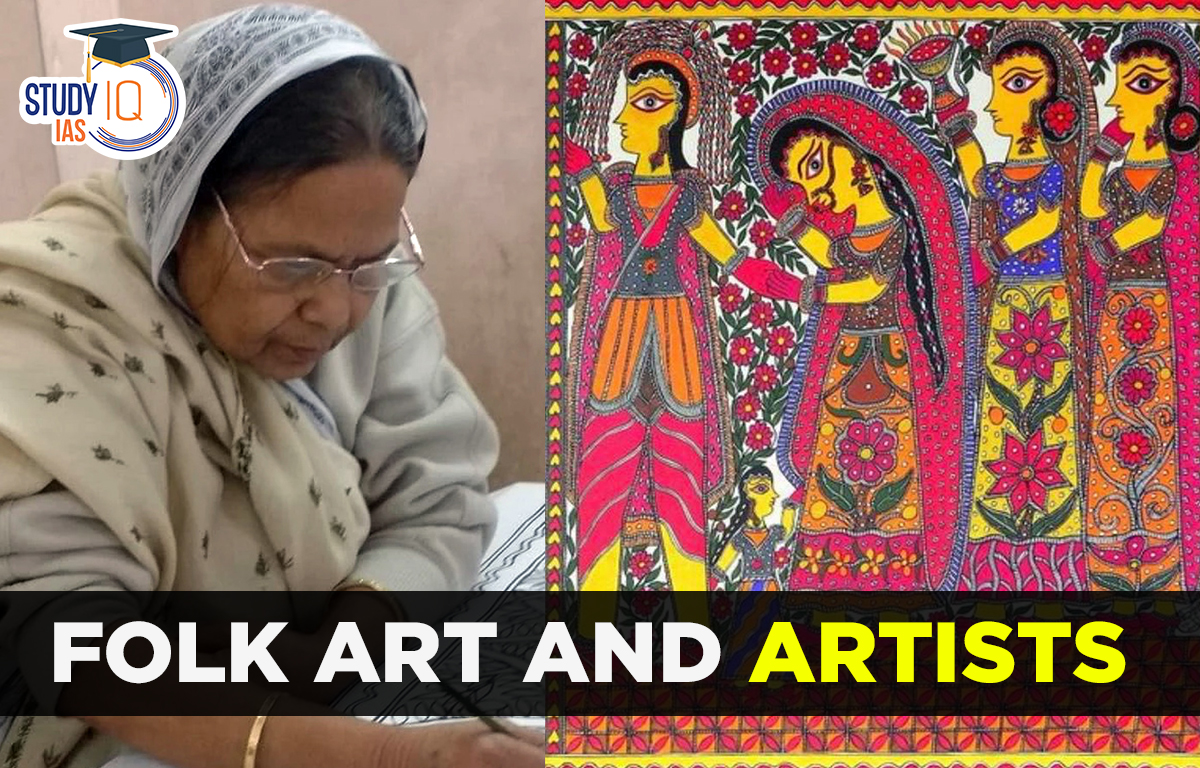Table of Contents
Context: Recently, the Prime Minister addressed the 98th edition of the monthly radio programme Mann Ki Baat.
Highlight
- PM spoke of several musical instruments and folk artists who he hoped would “continue to inspire everyone at the grassroots towards making performing arts more popular”.
Sursingar
- It is a stringed musical instrument that is similar to the sarod, but which is older and produces deeper notes.
- The instrument is made of wood and has a gourd attached to a hollow wooden handle with a metal fingerboard.
- It can be played either holding it vertically in front of the musician and supported by his left shoulder like the Veena, or holding it parallel to the ground like the Sarod, or like the Sitar, which is held at an angle of 50-60 degrees to the ground.
- The Sursingar (along with the Rudra Veena and the Surbahar) usually accompanies Dhrupad, the genre of Hindustani vocal music which has a low, deep, and thoughtful pitch.
- Joydeep Mukherjee: Kolkata-based multi-instrumentalist Joydeep Mukherjee is credited with reviving the Sursingar.
- He is also credited to revive “Radhika Mohanaveena” named after its creator, Radhika Mohana Maitra.
- He is among the youth honoured with the Ustad Bismillah Khan Award.

Mandolin
- It is stringed instrument, usually with eight strings that are plucked with a pick, similar to a lute.
- The Mandolin is a moderately sized instrument, smaller than the Veena, Sitar, or guitar, and was developed in Europe in the 18th century as an evolution of the older Mandora (Mandola).
- The Mandolin has long been part of the Indian film music tradition.
- Greatest exponent of the Mandolin in Indian classical music was the late Uppalapu Srinivas, often known as ‘Mandolin’ Srinivas
- A great classical Mandolin player before him was Sajjad Hussain; and Bollywood’s greatest was Kishore Desai.
- India’s best known Mandolinists today are Snehashish Mozumder, Pradipto Sengupta, Uppalapu Nagamani and N S Prasad.

Karakattam
- Karakattam is an ancient folk dance of Tamil Nadu in which performers in colourful saris dance with a pot (karakam) on their head to invoke Mariamman, the goddess of rain.
- V Durga Devi of Salem is a well-known Karakattam dancer.
- She recently won Ustad Bismillah Khan Yuva Puraskar Award.

Perini Natyam
- It is a dance dedicated to Lord Shiva that was “quite popular during the Kakatiya dynasty”.
Meitei Pung
- Pung is a percussion instrument made of softwood, parchment, leather, and cotton.
- It is traditional instrument, found in Manipur.
- It is a hollow cylindrical drum of softwood, both faces are covered with parchment, black loading is pasted on both the heads. The parchment is laced by the leather straps.
- It is used as an accompaniment to Natasankirtana and other traditional forms of Manipur.

Rajula-Malushahi
- It is an old medieval period love story and folklore of Uttarakhand.
- It describes love between Rajula, a princesses of Shauka family and Malushahi, a prince belonging to Katyuri dynasty of Kumaon.
Ustad Bismillah Khan Yuva Puraskar
- It is given to artists up to the age of 40 years.
- Objective: Identifying and encouraging outstanding young talents in diverse fields of the performing arts and giving them national recognition early in their life, so that they may work with greater commitment and dedication in their chosen fields.
- It carries a purse money of Rs 25,000 an Angavastram and a plaque.


 Serious Fraud Investigation Office (SFIO...
Serious Fraud Investigation Office (SFIO...
 Article 142 of Indian Constitution, Sign...
Article 142 of Indian Constitution, Sign...
 Pakistan-Occupied Kashmir (PoK): History...
Pakistan-Occupied Kashmir (PoK): History...





















